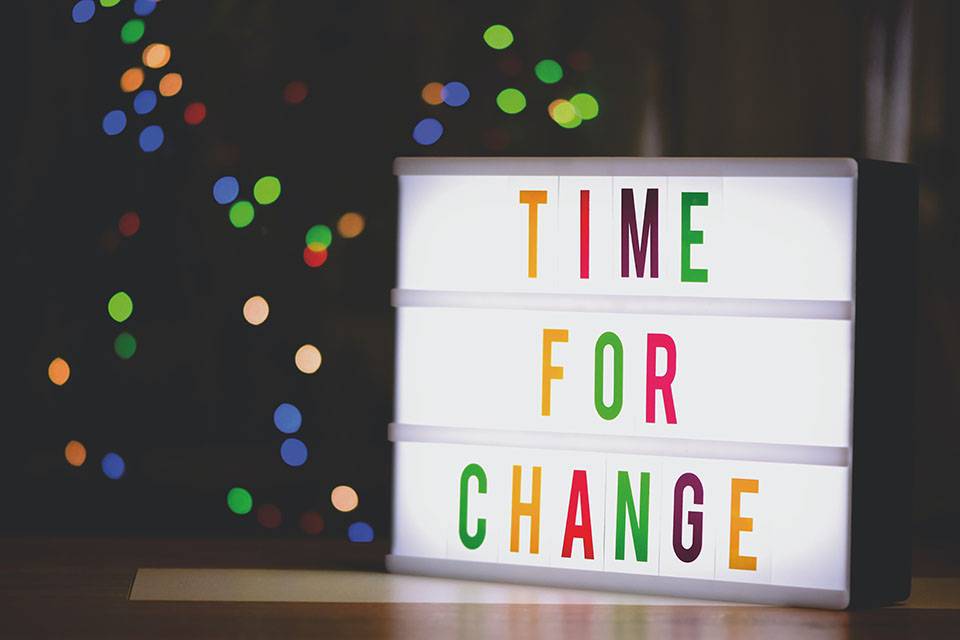From The Readers Minds!
2nd Edition
Editorial
We at Inside Apparel take pride in being a platform where you, the readers can express, discuss, opine & share your points of views.
Each article on this site has garnered multi faceted comments, many of which are thought provoking & intriguing. With each opinion expressed, we all learn something new & insightful.
We are sharing some of these opinions & comments from our THE MYTHS IN FASHION DESIGN SERIES. We are unable to represent every comment here, but would urge you to read through them at leisure. The links for the articles are provided below.
THE MYTHS IN FASHION DESIGN series consists of 3 articles :
- How many colours are too many colours?
- What is in a fit?
- Fashion Design: Commercial or Fine art?
Now let's look at the varied comments posted by our readers! Enjoy the insights…
BUILDING BLOCKS OF A BRAND
An Architecture of buying - selecting the blocks to make a brand to give it a personality, be it DIRECTIONAL or MULTILATERAL is the primary step in the visualisation of a brand.
There is a science behind colours, and selling pattern - to study that is important and give us insights like blue is the new black or green sells!!!
- Sarika Arora, Head corporate sales at Royal Data Matics Pvt. Ltd.
COLOURS & SELL THRU’S - A UNIQUE CORRELATION
Colours --The perpetual discussion .The reality is that it be menswear or womenswear ---There is core colour palette .It can change region to region with an accent but there is definitely a core colour range which sells ..In a fashion brand there has to be the core and some accent colours based on the seasons forecasts .These are only fillers or for the look---this will never be the major sale .There was one brand who used to put black in every style and allow the designer to choose the other colour from the colour palette .This simple ploy used to drive up their sell through per style .There are others who advise that core colours have to have larger quantities and accent colours have to have smaller buys . It's the ones who allow equal buys in all colours of the colour palette who end up with the stocks. Ive worked with the 7 top known brands of the world and found that their understanding of colour is what made half the sell through. This is indeed an interesting discussion
- Poonam Sood Lal, Consultant, Co-Founder Sash Exports(Buying House)
EXPERIENCE SAYS IT ALL
And this point is very true, that why we don't follow these rules.--- 1. because we lack experience? Most design teams are very young. Interacting with International brands, you can easily find designers in their 40’s and 50’s still designing. In India, is it this inexperience speaking?
- Swati Sriram, Design Consultant (Apparel and Home furnishing)

COLORS BEYOND DESIGNERS
Very important topic and very well explained. I agree with you completely as these are the very basic principles of color play. I believe most of the experienced designers do understand this and this should be an quint essential subject for Product Merchandisers and Sales managers also to study. I completely agree that a successful brand is successful because of the strategy it plans & follows. I hope this article is read by all in the retail industry, understood and well implemented too.
- Prasenjit Adhikari, Creative Director Arrow @ Arvind brands
ROOT CAUSE ANALYSIS
The conclusion on sales loss would definitely require a root cause analysis. Every EOSS has numerous reasons and which I find would one to be the choice of colors. We might thought those as the best sellers and aren’t. This will improve the designers capabilities and correlate to customers choice.
- Shankar
STANDARDISE FITS & HOW
In the domestic business I’ve seen designers trying styles on themselves and commenting .This is absolutely unacceptable. In International business the Dummy and fit model are standardised and no one cant tamper with it .
The question then comes –how to standardise a fit in India ?.Take your top 3 selling brands –study their fits and take the top 3 street side brands (critical to do this ) and study their fit.The street side brands actually would know the customer better otherwise they will simply lose the customer as most do not have fitting rooms.
Do NOT try to invent the wheel by introducing new fits.
The fit is the most critical part of the garment .We allow designers to tamper with it .It must stop .With standardised fits everyone can concentrate on the design element from the factory to the ultimate customer.
- Poonam Sood Lal, Consultant, Co-Founder Sash Exports(Buying House)
FIT COMES FIRST
Thank you for enumerating most important part of a garment which is fit. The process of fit development is extremely important and difficult part of a brand. But once it is cracked one should also maintain and update according to changing customer preference. Any fit the customer should feel comfortable, then the look and style.
- Prashanth HV , Product Strategy, Royal Enfield Apparel
GOOD FIT EQUALS LOYALTY
The biggest hook for consumer loyalty in clothing is FIT of the garment. I agree that sales will multiply exponentially once customers start trusting the size and fit of a brand. Customers getting discouraged when their actual size do not fit for other brands. Nowadays customers are using various online platforms to buy their merchandise where they cant do any wear-trial, in that case fit standardisation and fit strategy plays a vital role. And you very well explained that whether online or offline purchase great fitting clothes will convert the consumers to a brand loyalist. By understanding their consumers body types, study consumer reactions to fit, brands can ensure their consumer delight, otherwise the investment will end up into inventory only.
- Ravindra Chawla, Operations Head - Quality at Arvind Lifestyle Brands Ltd
FIT IS TECHNICAL
I agree with you on the approach towards handling fits by most of the brands and retailers in India. Many brands doesn’t really go through the process and the time taken for a fit creation. Either it is copied or tweaked from popular fits in trend. Like colours, fabrics, cost and brands, fit is very personalised experience of a consumer. Having standardised ” M ” or ” L ” across the fits might be challenging especially the target customers age group is wider. Developing a fit without compromising wearer’s comfort defines the success of it. While developing the fit, we should know the purpose, target group, body anatomy and contours of gender and age groups of the specific geographical region. Creating a good fit begins here without having answers for these questions may not yield the desirable results. And developing a good fit is science having said that right technical skill set, resources are important this is really understood and implemented well in the fashion industry in western hemisphere. Here we still contemplate with it and considered to manage on the go. Imparting the basic knowledge of fits and development process is essential to the PD, product, sourcing and buyers.
- Ramesh Ramalingam, VP Sourcing Operations, Arvind Fashions

FIT IS A PART OF RANGE CONSTRUCT
I read the article couple to times to understand the ‘need’ for a FIT STRATEGY for a brand or retailer separated from the product strategy. I completely agree that FIT is one of the most important criteria for a product purchase, having said that, I am of the opinion that a good product/ Buying manager has to embed Fit as part of the range construct. The basic premises of understanding the customer and the Brand proposition, Range construct would take care of Category offering, fabric & colour selection, Fit offering and pricing. Depending upon the consumer buying behaviour each category has its selection criteria, How well the buyer is able to map and align the offering to this makes him/ her good or bad.
Alienating Slim/ Skinny fit in favour of Comfort fit may not be the Answer, with the whole fitness movement from Gyms & fitness centres, healthy eating options, mind and body wellness programs has fuelled the Fitness & Sports industry. Workout is becoming a part of Average Indian.
Investing in studies and Fit researches, Consumer fit testing is a better approach. Quality of fit technicians, investing in training a buyer & designer to understand how basic measurement, cuts and shaping could evolve into a desirable and well accepted Fit.
At Meraki, We understood Fit to be our most important component, We have ergonomically designed our silhouettes and fits to ensure they drape and fit well on various body shapes. Our floating size concept takes care of the ‘in betweens’ and caters to a huge ‘not-so-perfect’ body types. Being an e-commerce Womenswear brand, by investing in identifying the right fit for our customer has kept our returns to a bare 6% as against 30% industry norm and our customer repeat purchase is 45%.
Its a different but complimenting perspective on the article, the teams to work their skills on bettering the RANGE CONSTRUCT.
Thank you Anindya for bringing these insights and initiating the dialogues with readers for all rounded views.
- Himanshu Singh, Co-founder, Meraki
LACK OF STANDARD MEASUREMENTS
Unlike Europe , Australia, Japan, USA – India still have not derived a standard Measurement chart. With our diversified cultures and regions, the scope of FIT or measurements becomes very critical for any launch. Thus we majorly attribute the fits based on running trends. If we look at the return stocks we can easily analyze the sale trend. The question is are we doing this?
- Ajay Ravuri, General Manager, Quality @ Arvind Fashions Limited
SUBJECT MATTER EXPERT NEEDED
There is enough data to retrieve the standard sizes from Sale History. However I’d like to stress that this area requires a ‘Subject Matter Expert’ and needs strong technical know how & intervention.
I spent my initial years in M&S, working as a technician, I learnt that fit is not just an outcome of a correct size chart, it requires technical skill & mastery. An almost perfect fit requires
- Basic construction guidelines
- Deep understanding of fabric behavior
- Standard size Mannequins
- Understanding in Pattern Making
- Draping skills
- Understanding in sewing, ease, allowance etc
There’s plenty that goes into getting a fit right.
Designers & Brands must not take decisions on fits on their own, as it’s not their area of expertise, they must at all times seek informed decisions from technical experts.
- Neeraj Katoch, Sr. Mgr B&M, Arvind Fashions

LEAP TOWARDS TECHNOLOGY
Fit is paramount in decision making but also in customer loyalty, as you rightly said. Hopefully we are going to take a leap towards technology as an industry and we will be able to answer the question ‘what’s in a fit?’ With “Everything” soon.
- Nitin Gupta, Design, innovation & BD at Arvind Ltd.
DATA & FACTS - PARAMOUNT IMPORTANCE
Diligent data mining and fact finding on consumers across physical parameters. Consumer insighting across emotional parameters have a huge impact on off take. Should be taken very seriously
- Karunesh Vir Vohra, catalyst @ Business of design at BO
MERA WALA PINK SYNDROME
I can’t agree more than this with you. It’s an amazing series with 360*degree insights of all the fundamental aspects of our trade. As i was part of many such conversations with design team exactly know what is “Mera wala pink syndrome”.
Imparting the knowledge of apparel manufacturing processes and most importantly the timelines with design team is imperative. Always there should to be a balance between creativity and commerciality. I had seen designers who are very decisive, having strong commercial sense and upholding the brand DNA all the time.
- Ramesh Ramalingam, VP Sourcing Operations, Arvind Fashions
Your observation on The Mera wala pink syndrome is hilarious and so true . I admit ,I have done this too but later, better sense prevailed and I learnt that it’s important to have a bird’s eye view and a wider understanding of the brand’s or business requirement .
I have also noticed that a lot of apparel designers bring in their personal tastes and preferences loosing sight of brand handwriting , positioning , and pricing.
- Moutushi Dey, Design Consultant
A FASHION DESIGNER OR AN APPAREL DESIGNER?
I see these as two separate things.
Fashion designing is the art of designing clothing, fashion, accessories, etc.
Apparel designing is a more technical term–pertaining to the specific act of creating clothing from nuts to bolts. If someone is apparel designing, I seem them more as a technician. For example when a big house hires a team of designers to create a line under that house’s label such as Puma, or Nike or Gap, those designers who work for that house would be referred to as apparel designers.
In order to bring speed to market a Brand, while hiring, should be clear on their requirements.
Does their business permit to hire Fashion Designer or Apparel Designer?
- Sanjay Lal - Co-Founder, Sash Exports (Buying House)
A COMMERCIAL DESIGNER
The transition from an artist to a designer starts with fashion education. The growth from a designer graduate to a commercial designer is helped by acquiring technical, functional and production knowledge of product one works with. But to top it off and be really successful as a commercial designer, one needs to layer all the technical and production knowledge over a culture of imbibing the brand DNA (also called the brand signature/ design language etc). When one can seamlessly transition from concept to sample to production feasibility, incorporate top quality parameters into the final product, work with the production planning team to ensure best bulk output and finally also articulate how would it be displayed/ catalogued, communicated/ described and price it most effectively for a high sales velocity (effectively is not about being the lowest MRP achievable at a certain multiple but about fitting in with customer and pricing trends for similar brands). A designer’s mind needs to move from concept to revenue per option through the stages of shortlisting and finalising ruthlessly. Emotions have a role to play for most designers, right brained as they are. It’s a fine balance the most designers will need to strike, and once they’re able to balance their emotions and commercial pragmatism, a designer is probably the biggest asset an organisation has, and the glue that keeps buying, merchandising, sourcing and retail planning stuck together on a journey to greatness.
- Gautam Kotmraju, former Co-founder at CultSport, CultGear
CONCLUSION
Design lays the foundation of any apparel business. They are entrusted with bringing the brand alive and design clothes which don’t just look good, but also make the customers come back again & again.
With a systematic thought through approach, as suggested in these articles, the design team will deliver business results & keep the customers coming back for more.
While there are a few notions which suggest otherwise, it's important that the designers prioritise & look at the bigger picture.
I hope you enjoyed reading this series on the myths of fashion design. We will come back with more exciting articles in the future. Do share your comments & thoughts with us…
Keeping reading & sharing.
RELATED TOPICS:#Apparel,Fashion,design,Brand Strategy,apparel industry,Shilpa Polavarapu,Editor's Articles
Leave a comment
Our email address will not be published. Required fields are marked *







2 Comments
TeseniRipNov 21, 2023 at 23:00 pm
priligy buy Better yet a mastectomy due to my small breasts
Manoj kumarSep 26, 2020 at 18:12 pm
Wonderful series of articles - THE MYTHS IN FASHION DESIGN SERIES is well explained in detail by the authors on a good platform for digital learning. The comments listed across by the expertise in the industry add up to the learning. Looking forward for the next series of articles. ???